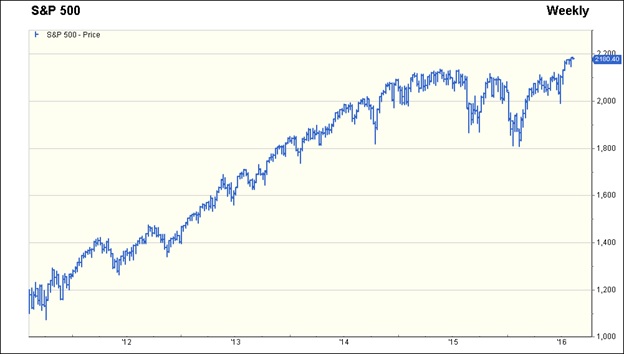What’s On Our Minds:
This weekend, we got some questions about investing in real estate vs. investing in the stock market. Clearly, investing in a home can be a great decision. But we maintain that for excess capital, the stock market is the right choice for almost everyone. Here’s some point to consider when making the decision.
First, if you don’t plan on moving in the next couple of years, owning the home in which you live is usually the right decision. Rent isn’t exactly “throwing money away” like some people have said, because home ownership brings with it taxes, maintenance, and very importantly, transaction costs. But, over many years, there is great value in owning a home as a major asset.
Second, the expected return on a piece of property, on average about 3%/year, is much lower than that of the market, at about 8% a year. People who invest in property often do so because they believe they’ve found a special deal or have some special knowledge about the development of the area. That may be true- but you have to be really sure, because the direction of a development plan or even an entire city can change overnight.
When investing in property, the real advantage comes from the leverage you get from your mortgage. If you put down $40,000 on a $200,000 home, your equity after closing costs on day 1 might be $15,000. If your equity in the first year rises to $22,500 (both repayment and appreciation) that is a 50% return on equity. In the last year, though, when your equity rises from $192,500 to $200,000, that is just a 4% return. Leverage seems like magic, but one must remember- leverage also works on the downside.
Also, when it comes to investment, buying a single property carries with it a lot of risks that one doesn’t get in the stock market. A single house can get flooded, or a school district can go downhill, or myriad other problems. With a diversified stock portfolio, the only comparable risk is that the entire U.S. economy collapses, and we return to a barter system before your retirement, in which case that property investment probably wouldn’t work out either.
One final thing we stress: there has never been a period of twenty years in the market in which a diversified investor would have not gained money. Over even the worst-timed thirty year period, there is no such investment that would not have appreciated greatly. The same cannot be said for property.
Of course, this very brief overview of the ins and outs of the decision to invest in property only begins to scratch the surface. There is much more to consider. But hopefully this post can give you a broad starting point to think about where to invest your money.
Below, as an example, we see the Case-Shiller home price index (red) vs. the S&P 500’s total return (blue). While the housing bubble seemed like the best investment around in the early 2000s, we all know how that turned out. Since then, the stock market has rebounded very nicely. A $100,000 investment 15 years ago in housing would be worth $157,760 now. The same investment in the market would be worth $276,160 now.
Last Week’s Highlights:
In a short week of trading due to the Labor Day Holiday on Monday, the market was rather flat until Friday when indexes took a big turn south. By the close on Friday, the Dow Jones had sold off 2.2% to finish its worse week since January. Investors were surprised by news that the European Central Bank decided against increasing its stimulus plans. Furthering selling pressure, Boston Fed President Eric Resengren, said that persistently low interest rates have “created excesses in the financial system”. This idea that the stock market is “addicted” to low rates is nothing new but his comments had the bears out in full force on Friday.
Looking Ahead:
While market moving news was hard to come by in August, volatility has returned to equity markets with uncertainty surrounding this month’s fed interest rates decision and the upcoming Presidential election. While awaiting 3rd quarter earnings season to begin in October, investors will continue to focus on fundamental economic indicators and monetary policy at home and abroad. Fed officials are not allowed to make public statements after Monday so investors will be listening intently to their last comments before their official decision is released at their Sept. 20-21st meeting. Some more important data comes across the wire this week that will factor into the Fed’s September rate decision. Retail sales numbers will be released on Thursday and producer price index numbers will be released on Friday. Currently, fed funds futures indicate there is a 27% likelihood of a September rate hike and a 46% chance of a December hike.
What’s On Our Minds:
On Friday, the S&P 500 and Nasdaq both climbed to an all-time high after the Bureau of Labor Statistics reported that the US economy added 255,000 nonfarm jobs in July – beating Wall Street’s expectation of 175,000. Job growth in June was revised higher from a previous reading of 287,000 to 292,000. On previous jobs report Fridays, the markets have surged higher whether or not the report was strong or weak. A “bad news is good news” report typically held the belief that the Fed would continue accommodative policy and not increase interest rates. The response from the markets this past Friday was “good news is good news” as it appears the economy is strong enough to withstand further interest rates hikes from the Fed this year.
The other employment reports were strong as well with average hourly earnings rising 2.6% year over year and the labor force participation rate increased from 62.7% to 62.8%. This is encouraging as the rate hit a multi-decade low in late 2015. For August, let’s hope those seeking employment continue to avoid the beaches.
Last Week’s Highlights:
The stock markets rose on the week with all the major indexes in the green. The Dow Jones increased 0.6% while the S&P 500 and the Nasdaq increased 0.4% and 1.1%, respectively. With the rise in expectations of interest rate hikes, the financial sector jumped 1.2% and the utility sector declined 2.6%. Investors are betting that banks will make more money on their loans that they offer at a higher interest rate and that utility companies will have to pay higher interest rate on the debt they currently owe or will owe in the future.
Earnings season is winding down as approximately 87% of S&P 500 companies have reported their quarterly results. 69% of S&P 500 companies reported better than expected results. Furthermore, 53% of S&P 500 companies had their earnings estimates for 2016 revised higher, however, 56% of the companies had their 2017 earnings estimates revised lower.
Looking Ahead:
Looking ahead, the week is somewhat light on economic and company data. Pharmaceutical company Allergan and Tyson Foods report quarterly earnings on Monday. On Tuesday, Walt Disney and the troubled Valeant Pharmaceuticals International will report. Valeant’s stock has fallen from a high of $262 per share last August to $22 per share on Friday due to a government investigation on price increases of their drugs. Thursday will offer guidance and results from the battered retail stores will Macy’s, Nordstrom and Kohl’s all reporting. The report on July’s retail sales will be released on Friday giving investors a gauge of the US consumer – let’s hope all had too much fun on vacation.
This past Friday, all eyes and ears were turned to the Fed. That morning, the Labor Department reported 271,000 new jobs, a number much higher than expected. Of course this is great news for the markets and our economy in general. More hiring means that managers are expecting business to pick up, orders to increase, and for the health of our nation’s commerce to generally improve. We take this as a sign that business profits will improve. All good things for the market.
But what about the Fed? This much stronger than expected number is widely expected to be the signal the Fed takes to mean the economy is ready for an increase in interest rates. It almost certainly won’t be much: 0.25% or 0.5%. But what it will do is end eight years of the zero interest rate policy (ZIRP) that has defined our, and indeed the world’s, economy. It will mean recognition by the Fed that we are moving into a new economic time. It could also means a short-term dip in the market, but we are not concerned with such temporary movements.
Our nervousness about the market is assuaged by the jobs number. We continue to be positive for the long term.
Looking ahead, this week we will see how the nation’s retail sales are holding up. Last month, we saw month-over-month growth of just 0.1%, lower even than the consensus of 0.2%. A beat in this metric would underscore the need for action on interest rates.
 Many investors are riding high and feeling great as we continue to see gains in one of the longest bull markets since the 1940s.
Many investors are riding high and feeling great as we continue to see gains in one of the longest bull markets since the 1940s.
As we know, the bull market will only last so long: sooner or later, we are going to see a correction. We are monitoring the market’s higher valuation very closely. No one knows when it will come or how large the dip will be, but we do know it is coming. What’s important is staying strong in your investment strategy and fighting the urge to sell.
Retail investors (those who trade their portfolios non-professionally) have performance that significantly lags the market overall. This dynamic occurs because they tend to act on emotion, selling at the bottom and missing the large early gains of a recovery. (more…)
The true sources of excess returns
 The decision of how to allocate your money between asset classes (bonds, stocks, international, etc.) is important, we know. But just how important is it? There are many sources that say “over 90%” of your return comes from asset allocation. This oft-quoted statistic comes from a misinterpreted financial study from 1986 (“Determinants of Portfolio Performance,” by Gary P. Brinson, Randolph Hood, and Gilbert L. Beebower, published in the Financial Analysts Journal). What the study said was that asset allocation explained 93.6% of the variation in a portfolio’s quarterly returns. What does “that“ mean?
The decision of how to allocate your money between asset classes (bonds, stocks, international, etc.) is important, we know. But just how important is it? There are many sources that say “over 90%” of your return comes from asset allocation. This oft-quoted statistic comes from a misinterpreted financial study from 1986 (“Determinants of Portfolio Performance,” by Gary P. Brinson, Randolph Hood, and Gilbert L. Beebower, published in the Financial Analysts Journal). What the study said was that asset allocation explained 93.6% of the variation in a portfolio’s quarterly returns. What does “that“ mean?
In fact, even that statistic has been hotly debated and interpreted in many ways. For clarity on this issue, we look to the ever-academic CFA institute, which tells us that, as a rule, “about three-quarters of a typical fund’s variation in time-series returns comes from general market movement, with the remaining portion split roughly evenly between the specific asset allocation and active management.” (Here, “fund” is referring to balanced mutual funds and pension plans.) (more…)
 A lot has been said about the importance of rebalancing. In fact, we at Hardesty Capital have said a lot about it. But let’s take a step back. In investing, every action taken is about managing risk versus return. Investors choose what level of risk they are willing to accept, knowing that with more risk they can expect higher return. The opposite is also true: less risk means less return. When investing in individual securities, research is performed to determine if that relationship is misaligned, that is, to look for higher returns with less risk. However, when talking about entire asset classes and their place in a portfolio, all that we need to focus on is managing risk, reward, and time. (more…)
A lot has been said about the importance of rebalancing. In fact, we at Hardesty Capital have said a lot about it. But let’s take a step back. In investing, every action taken is about managing risk versus return. Investors choose what level of risk they are willing to accept, knowing that with more risk they can expect higher return. The opposite is also true: less risk means less return. When investing in individual securities, research is performed to determine if that relationship is misaligned, that is, to look for higher returns with less risk. However, when talking about entire asset classes and their place in a portfolio, all that we need to focus on is managing risk, reward, and time. (more…)
We’re going to try something new on the Hardesty blog. In addition to giving you weekly updates about what we think was important that week, we want to hear from you. With that in mind, we are starting an “Ask Hardesty” column in our blog in which we’ll be answering questions that you send in. The questions can be about an investing concept that isn’t quite clear, something in the financial news, or anything investment-related. Just e-mail johnk@hardestycap.com.
Our first question is seemingly the most basic:
What should I invest in? -Tina D.
It seems the most basic to the asker, but it is perhaps the most complicated to answer. Unfortunately, the answer is going to be, “It depends.” It depends on the timeframe of the investment, your resources, what your goals for the investment are, and your tolerance for risk, among other things.
These are too many variables for just one concise blog post. As such, we’ll look at one at a time in a multi-part post, to be compiled at the end.
Risk
Let’s first consider the most fundamental part of your investments: the level of risk you are taking. Generally, investors think of “risk” as “How much money could I lose?” whereas we at HCM prefer to think of this question in terms of “What kind of price swings might I experience?” The difference might be subtle to a novice investor, so we won’t dwell on it. Basically, with risk, you need to know that in order to make money in the long term, you have to be willing to risk losing money in the short term.
Something else that is essential to understand but is not generally well-understood is that risk and return are not only related, but almost interchangeable. A higher return means a higher risk. At HCM, we have seen countless examples of investors losing money in a supposedly higher-return investment that they thought was “safe.” However, what the market is telling you by offering a higher rate of return is that you are taking more risk. There may be some exception to this rule, but we are certainly not aware of one.
In general, stocks have higher returns (more risk) over time than bonds. Bonds return more than money market funds (cash). Even within these categories, we can have differing levels of return: some stocks are riskier than others, as you might imagine.
If you need your money back in two years to pay for a child’s education, you shouldn’t take as much risk as if you are looking to start saving for your retirement that is thirty or forty years away. Over thirty years, you shouldearn the 8-10% long-term average that stocks provide, even if you lose 25% in the first two. But if you need the money in two years, you can’t take those kinds of risks.
If you can’t stomach the thought of a 45% loss of your investments, you will need to choose safer asset classes than just stocks. Similarly, if you are risk-seeking, you might want to take a higher weighting in riskier stocks than others in a situation similar to yours. Whatever your situation, you need to understand the risks you are (or aren’t) taking.
In sum, when investing, you first need to consider how much risk you want to take over your entire investment portfolio. If you are conservative on risk, it doesn’t mean you can’t have 2% of your assets in a tech stock, as long as your overall average risk is where you want it to be.
The concept of risk and return is one we will return to often. If your goal for the question “What should I invest in?” is a hot stock tip without considering all of these things, you may want to reconsider your strategy.

Look for the next segment soon.
The Hardesty Blog has returned with a renewed vigor.
The markets had a good week, bolstered by news from Europe. The Dow was up 1.97%, the S&P 1.71%, and the Nasdaq 1.12%.
European Central Bank head Mario Draghi’s comments were the focus of the week. Draghi said that he is willing to do whatever is necessary to keep the Eurozone intact. There is still plenty of uncertainty in Europe. There is still plenty of it here, too: a fiscal cliff and an election are among the American uncertainties. But we believe that, in the short term, the Eurozone will not break up. This idea has stabilized the markets somewhat.
Next week, earnings season continues. As well as watching our companies, we’ll look at the unemployment figure, as well as initial claims.
This week’s factoid: In ancient Greece, Olympic athletes were expected to be the pinnacles of both mind and body. Poetry and verse were an important part of the games. At Hardesty Capital Management, we believe the Portfolio Management event would be an exciting addition to the 2016 games.

Hello again everyone. Sorry that this blog has taken an unannounced hiatus. We are back.
The markets had a solid week, with the Dow, S&P and Nasdaq all ending solidly higher: 1.28%, .98% and 1.19% respectively. Capping off the week was the March jobs report. We saw 216,000 jobs created last month, compared to the expected 180,000. The unemployment number came down as well, to 8.8%. That figure has declined a full percent over the last four months. It would seem that employment is gaining some real traction. We expect this trend to continue.
A trend that we are not so cheerful about is inflation. We’ve seen manufacturers across industries saying that they need to increase prices to match rising input costs. The Fed’s infusion of umpteen billions of dollars through their various programs puts more upward pressure on prices. A lot of attention from the media is focused here now, and we think it is something that needs to be watched closely.
Next week, we’ll be looking towards the consumer when consumer confidence numbers are announced Friday. The other, always-important piece of the consumer’s confidence, continuing jobless claim numbers, will bear consideration as well.
This week’s factoid: The radiation exposure associated with living within 50 miles of a nuclear power plant for one year is .09 μSv, which is slightly less than the radiation exposure associated with eating one banana (.1 μSv).

 We’ve all heard about the importance of asset allocation. But how can it really help you? What do those different allocations mean for risk? And do you really need to reallocate?
We’ve all heard about the importance of asset allocation. But how can it really help you? What do those different allocations mean for risk? And do you really need to reallocate?
This study demonstrates how splitting one’s assets between bonds and stocks in different ways affects the performance of a portfolio, while simultaneously showing the effect that rebalancing the portfolio has on returns and risk (volatility). The analysis constructs a $1,000,000 investment starting in 1983. Various portfolio strategies are then modeled, and the results shown as of December 31, 2009. As one might expect, the highest returns are achieved by allocating a higher percentage of funds into stocks, but the risks associated with such an allocation are much higher. (more…)
Markets edged up a bit this week. The Dow led the charge, up .72%, with the S&P and Nasdaq lagging a bit, up .28% and .21%, respectively. Promising reports on layoffs, factory production and consumer spending have contributed to hopes that 2011 will pick up nicely.
Initial jobless claims unexpectedly fell on Thursday. The number of claims declined 3,000 to 420,000, compared to estimates of a rise of 4,000. This is good news, but continuing claims increased by 22,000 to 4,135,000. The mixed data points to a slow recovery- as we already know. But we do continue to believe that we will steadily, if slowly, win this race.
Next week will be a quiet one, given Christmas coming up Saturday. Durable goods and new home sales numbers might receive some focus.
This week’s factoid: The $7.2 billion recovered from the estate of the biggest beneficiary to Bernie Madoff’s fraud represents about 36% of the estimated total investment losses.
The markets had a good week. The Dow ended up 2.62%, the S&P up 2.97%, and the Nasdaq up 2.24%. Fueling the growth was the November ADP National Employment Report, which reported private nonfarm payrolls to be up by 93,000 jobs. Also helping was movement towards stability and resolution in the continuing debt problems in Europe, as well as the U.S. government working toward extension of tax cuts. Despite a disappointing employment report from the government Friday, the markets finished the week strong.
There has been a dramatic increase in interest rates recently. Money is finally coming out of bond funds. Money is not moving into stock funds yet, but that money must eventually go somewhere. These moves could signal renewed confidence in the markets and in the economy.
Next week is light in economic data, and no earning reports from companies stand out.
This week’s factoid: Spain has failed to attract the 2018 World Cup to its shores, and the event will instead be hosted by Russia. We have our fingers crossed that Spain will be more successful in other endeavors in the coming weeks.
The markets had a disappointing week after a string of mostly uninterrupted positive ones. The Dow was down 2.12% for the week, the S&P down 1.79%, and the Nasdaq lost 2.29%. Spearheading the decline is the decision by the Chinese government to raise interest rates in response to fears of rising inflation. Also, we had a couple of high-profile companies, Cisco and Disney, with challenging earnings calls.
We see that Wall Street is now back into full gear, and financial wizards are up to their old tricks. For example, BWAY found buyers for PIK bonds- payment in kind. “Payment in kind” means that the bonds’ interest is paid by some means other than cash, usually by increasing the principal owed to the bondholder. Why someone would purchase such a bond is beyond us.
Another example is bonds being issued that are backed by assets that are already promised as security on another loan- like a second mortgage. The problem is, if the company becomes insolvent, the collateral can’t very well go to both bondholders.
Next week we have a very full week. The key components will be retail sales, housing and inflation. There are also numbers coming out on manufacturing and consumer confidence. The market will be focused on economic data next week.
A quick update this week.
The markets ended the week mixed; the Dow was down .13%, but the S&P was mostly flat at +.02%, and tech had a great week with the Nasdaq up 1.12%.
We’re looking at Microsoft this coming week. We haven’t come down on either side yet, but there are some items of interest. A deal for “social search” between Bind and Facebook may reinvigorate the image of the aging tech company, making it relevant again. Also in that vein is Microsoft’s stance as a commercial vs. a consumer company. It has been some time since anyone’s been excited about a new Microsoft offering. Instead, we are excited by Google or Apple. Microsoft may be becoming an “old giant,” but we can see that the position of “lumbering old tech giant“ might not be so bad: it’s worked out pretty well for IBM.
“Quantitative Easing” sounds like some erudite process performed by financial wizards, the particulars of which we could never understand. In reality, it’s much simpler. Explaining its particulars does take a bit of doing, though.
The term “Quantitative Easing” is really rather misleading. All it is, really, is the Fed injecting new money into the economy. The Fed is often increasing the money supply, but QE involves doing so in ways other than its normal methods (more on its “normal methods” in a moment). It is no more “quantitative” than any other process involving money, and “easing” just means “increasing the money supply.” (more…)









